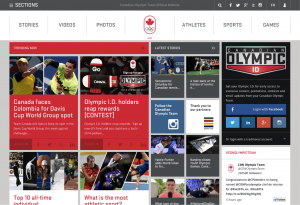How to manage your anxiety about public speaking
Glossophobia, or fear of public speaking, is one of the most common phobias. But there are ways to manage your fears.
Do you have glossophobia? While it might not be severe, most people fall somewhere on its spectrum. Glossophobia is the fear of public speaking. It’s one of the most common phobias because it’s connected to evolution and human survival, says Matt Abrahams, author of Think Faster, Talk Smarter: How to Speak Successfully When You’re Put on the Spot and host of the Think Fast, Talk Smart podcast.
“It all boils down to our relative status in the history of our species when we would hang out in groups of around 150 people,” he says. “Relative status wasn’t who drives the fanciest car or who’s got the most social media likes. It was where you were in the food chain.”
Anything you did that put your status at risk, such as misspeaking, put your life at risk because your relative status determined access to resources, reproduction, food, and shelter. Like many hardwired traits, it lingers, which is why you still become nervous about speaking up in a meeting or in front of an audience. Those circumstances trigger an evolutionary concern.
However, Abrahams says you can learn to manage your anxiety around speaking by addressing your symptoms and their sources:
Reducing the Symptoms
One way to manage anxiety is to focus on our physiological and cognitive experience—what’s going on in our body and brain. “For example, most people’s heart rate goes up, and they breathe more shallowly, which leads them to speak more quickly,” Abrahams says. “Adrenaline causes them to shake a little bit, and many of us blush and perspire.”
Focusing on your exhalation can relieve your shallow breathing symptoms. Abrahams says there are many techniques, but the most effective is to take deep belly breaths, filling the lower abdomen.
“All of the magic happens during the exhale,” he explains. “You want your exhale to be longer than your inhale. I like to joke that the ‘rule of lung’—not the rule of thumb—is to have your exhale be twice as long as your inhale.”
An extended exhale slows down your heart rate and breathing rate, as well as the impulse to talk fast, which causes breath issues.
You can handle the adrenaline symptoms through movement. “The [evolutionary] purpose of adrenaline is about threat,” Abrahams says. “It’s about getting us to move. That’s why we’re shaking.”
At the beginning of the speech, Abrahams recommends dissipating adrenaline by stepping forward and making big, broad gestures. In a virtual situation, lean forward and move your body.
“Nervous people make themselves small and tight, so they end up shaking more,” he says. “It’s about being expansive and moving in a way that’s appropriate and not distracting.”
Finally, address blushing and perspiration with temperature control. When you’re nervous, your heart beats faster and your body tenses up, causing your blood pressure to increase.
“It’s like you’re exercising,” Abrahams says. “It raises your core body temperature. The way to cool yourself down is to hold something cold in the palms of your hand, such as a water bottle. You’ll stop sweating and blushing as much.”

Relieving the Sources
The second way to manage your speaking anxiety is to focus on the sources that exacerbate it. A common source is what you’re trying to achieve through communication. For example, an entrepreneur seeks funding, or an employee wants their project approved. In these circumstances, the goal—a future state—makes you nervous.
Instead, Abrahams suggests taking actions that make you present-oriented, because you can’t be worried about the future when you’re in the present. Do something physical, for example, like shaking out your arms. You could also listen to a song or playlist, count backward by sevens, or practice tongue twisters.
Abrahams likes to have small talk with people before getting up on stage. “It gets me present because I have to listen to what they’re saying,” he says. “I know a professional speaker who gets paid thousands of dollars to speak. She plays Tetris right before she goes out on stage because it’s so present-oriented.”
Another source of anxiety is the desire to communicate perfectly. You want to give the correct answer or the best feedback, which creates pressure. According to Abrahams, there is no “right” way to communicate, only better and worse ways.
“Your brain only has so much cognitive bandwidth,” he explains. “It’s like a computer that has too many windows open, or a phone with too many apps running—it doesn’t perform as well.”
When you try to communicate “right,” you send part of your cognitive resources to this goal instead of to the act of communicating. “Don’t worry about saying the exact right word in the exact right place,” Abrahams says. “Focus on connection not perfection. Connect to your audience and do what’s needed for them to get value.”
A third way to handle the source of the anxiety is with experience. People become nervous when they don’t feel they have the appropriate skills for the task. But you don’t learn what you don’t practice. “If my water pipe erupts, I don’t know how to fix it. I’m made even more upset and nervous because I don’t know what to do,” Abrahams says. He suggests that taking classes, listening to podcasts, and reading books on speaking techniques can help.
“Once you manage anxiety, it is the gateway to focus[ing] on so many other things,” Abrahams adds. “You can improve your communication, your storytelling, your engagement, your ability to answer questions. You can connect more deeply and feel confident that your ideas can be heard. I think one of the greatest tragedies is when we don’t hear . . . from people who could add valuable input to the conversations we have.”
ABOUT THE AUTHOR
Fast Company
(14)
Report Post









